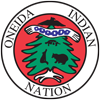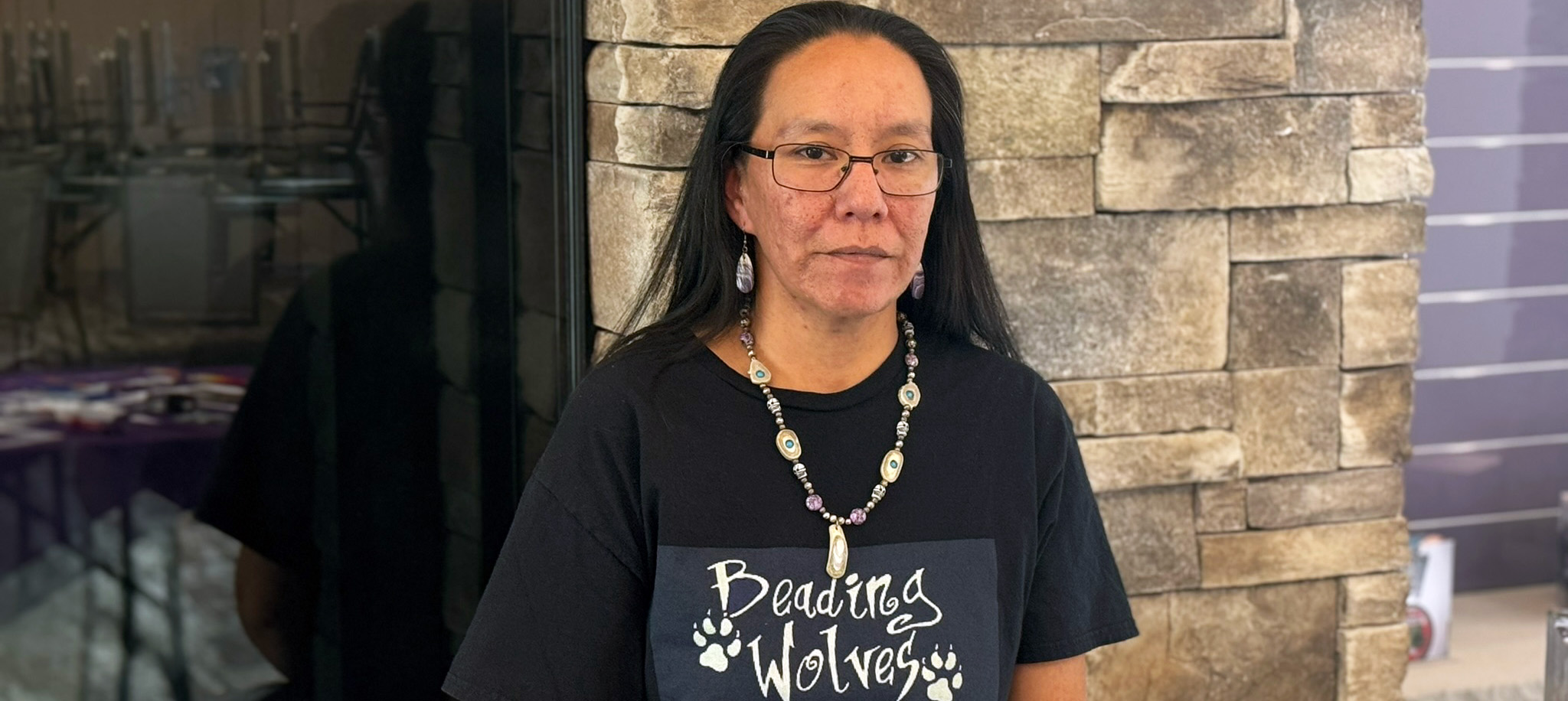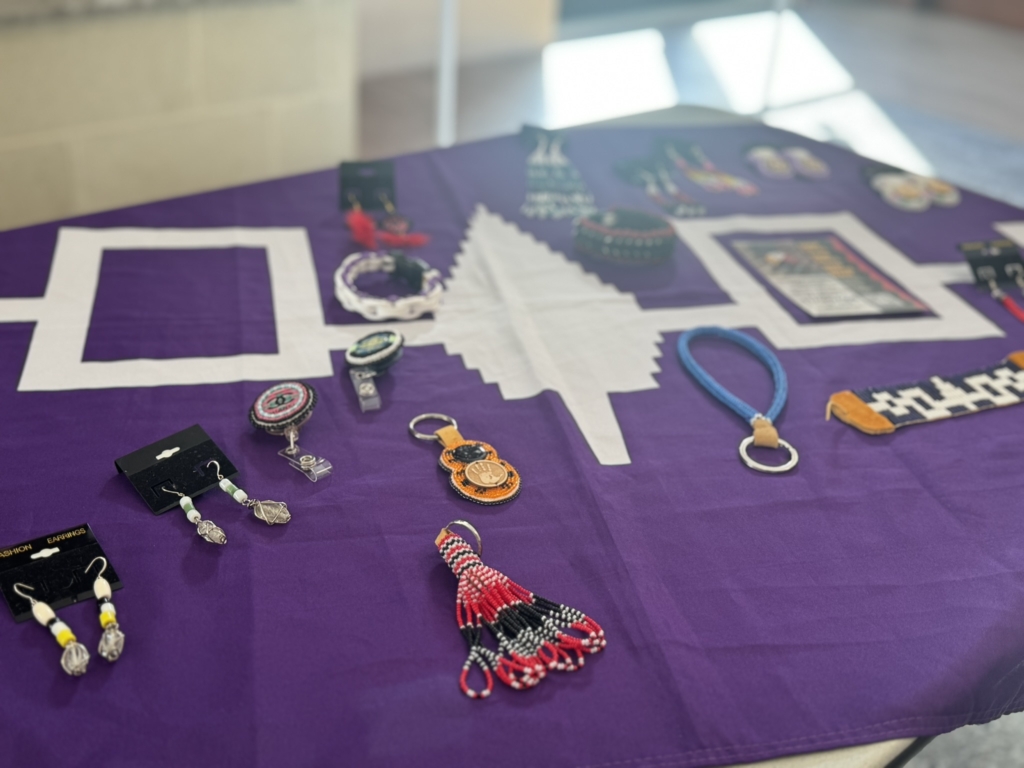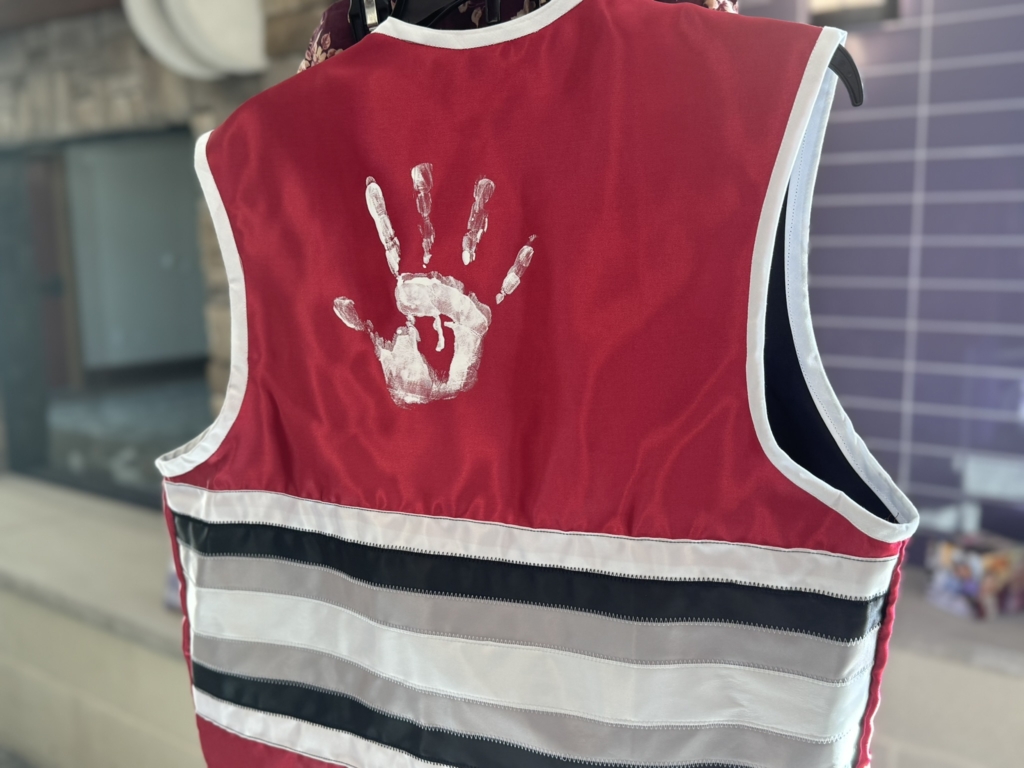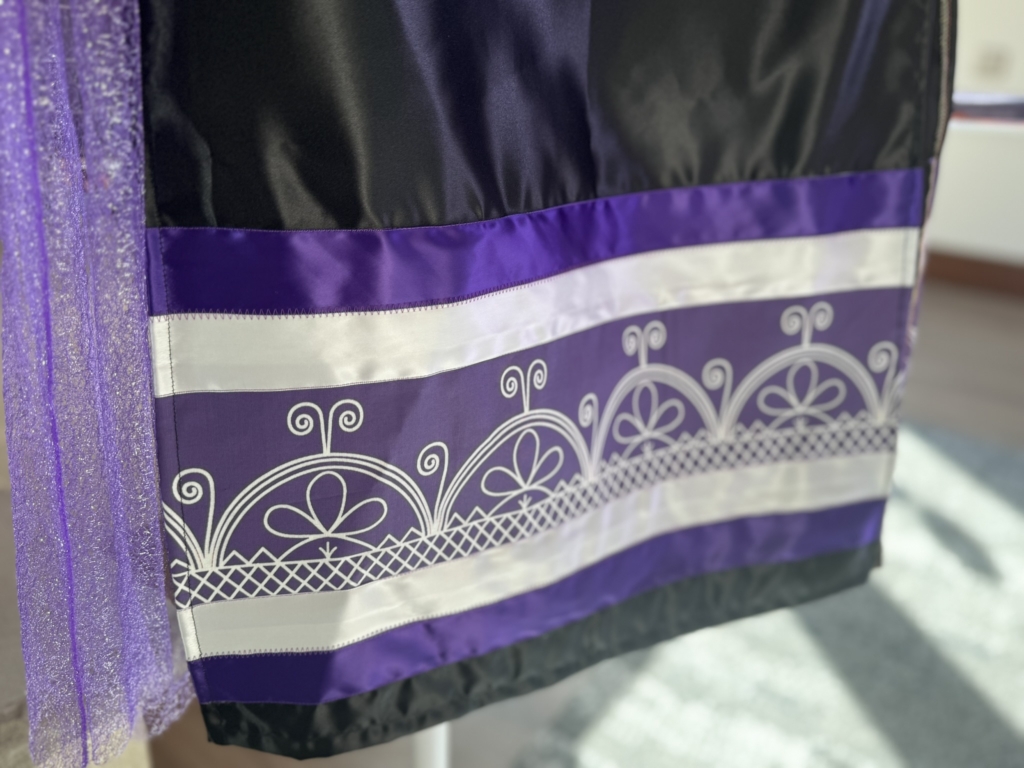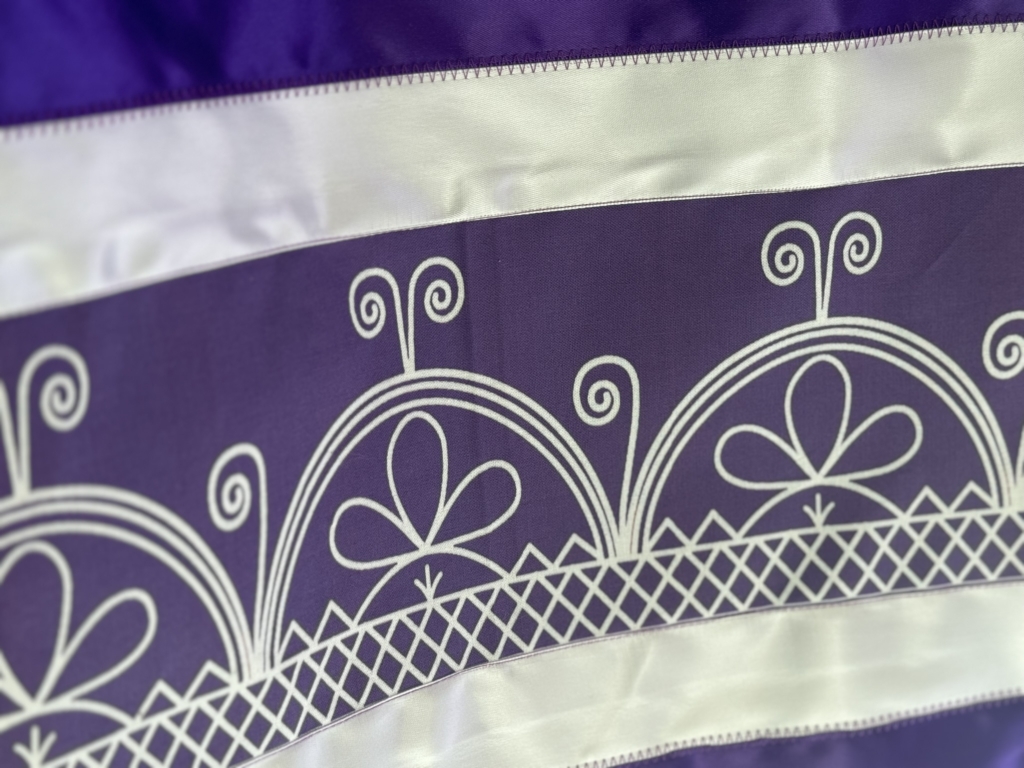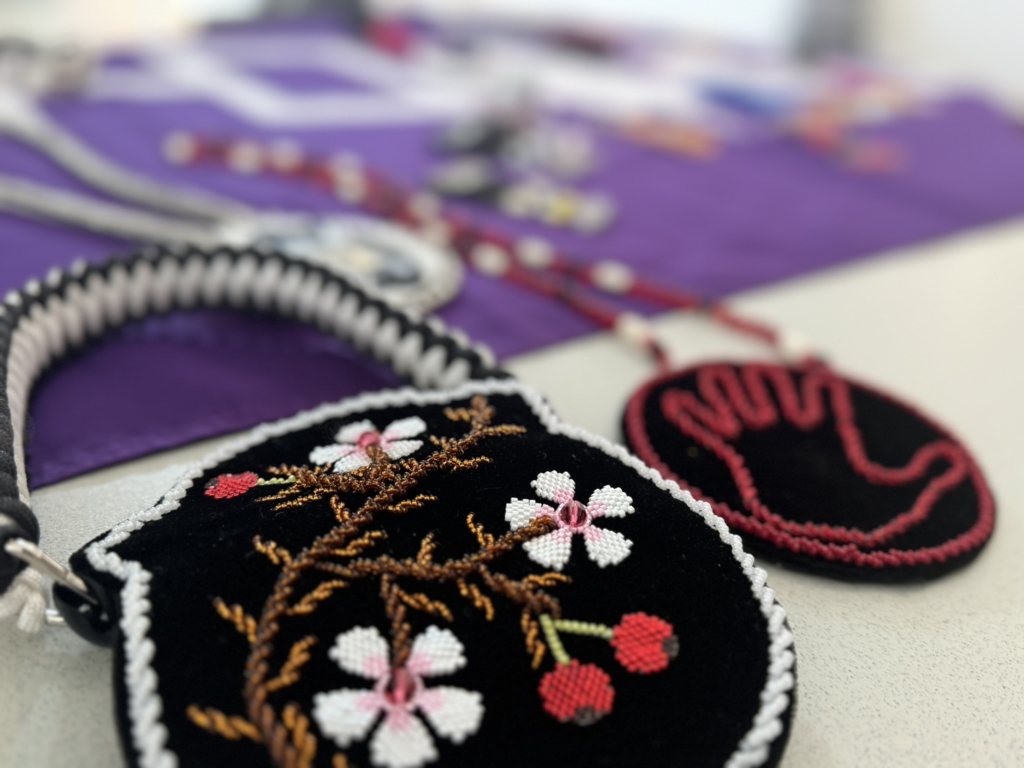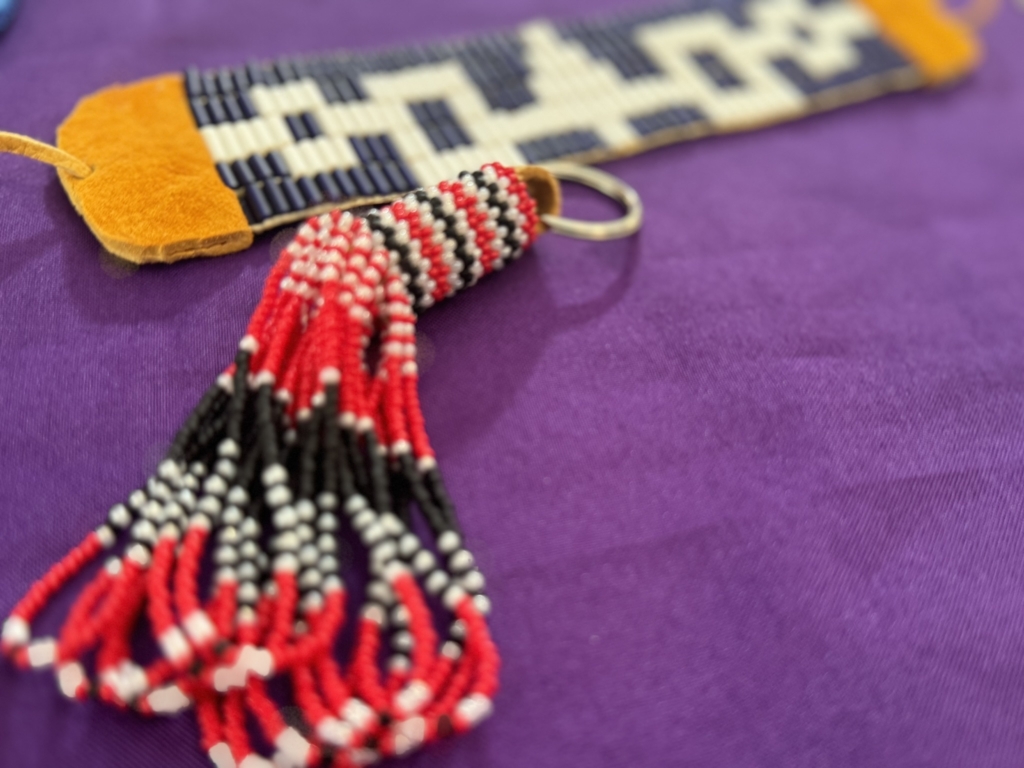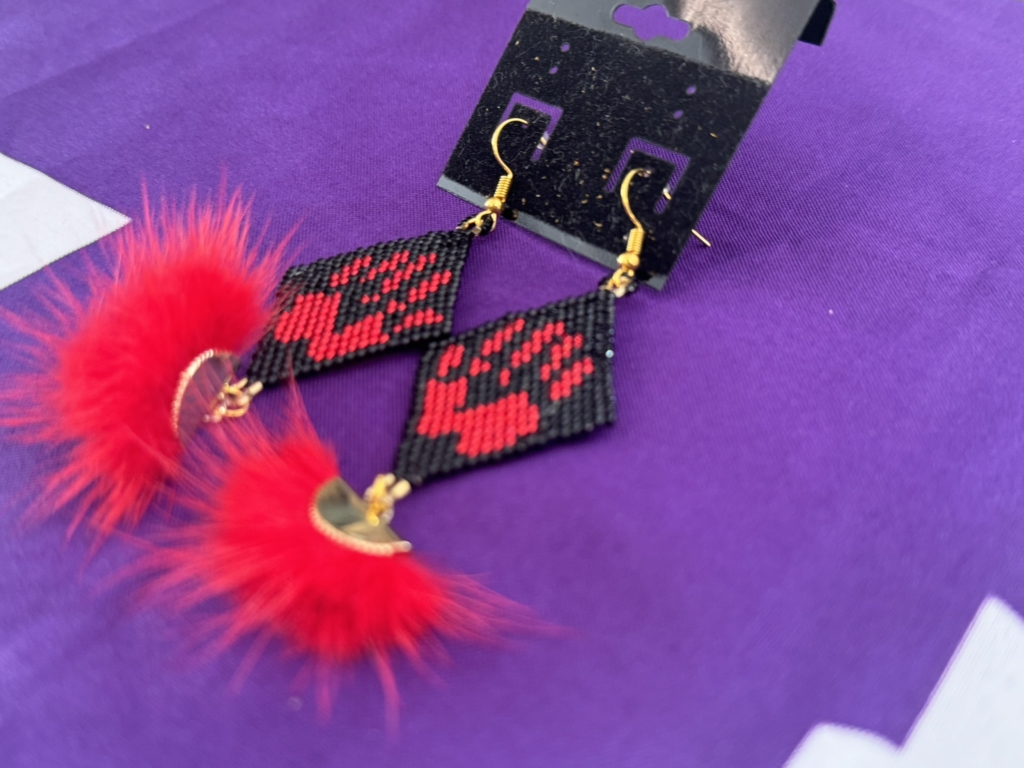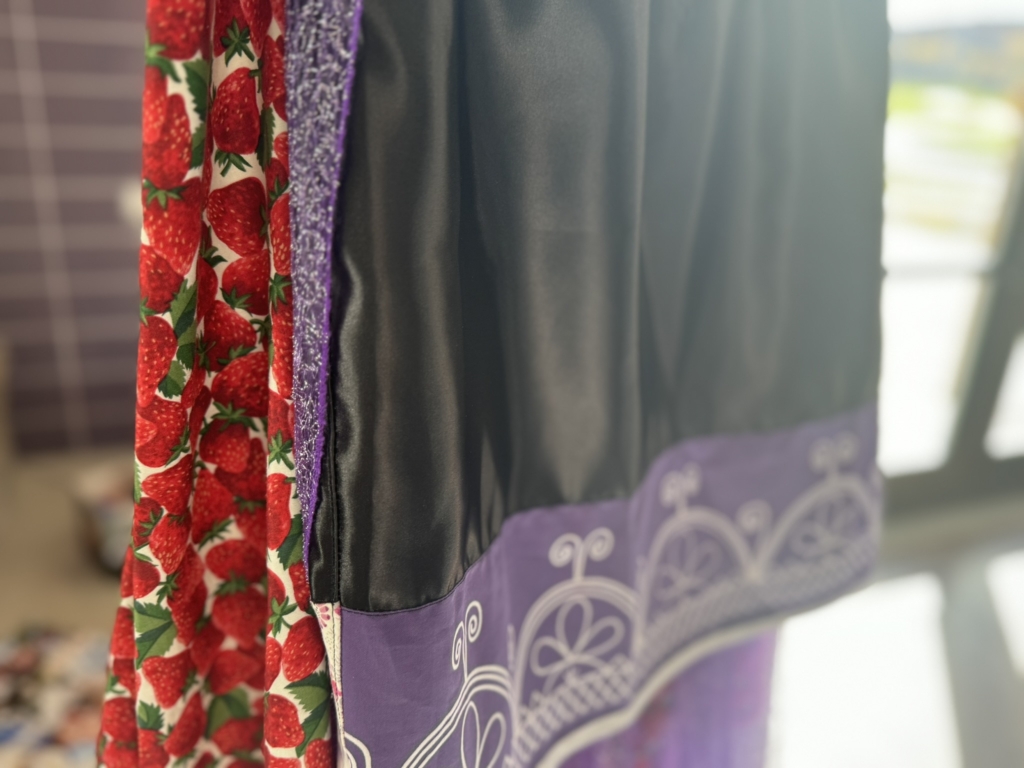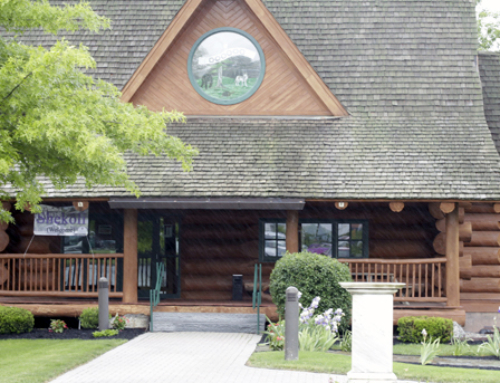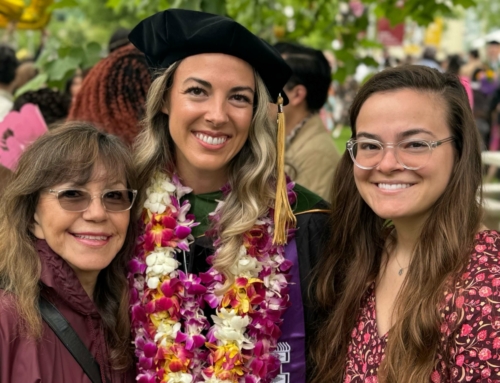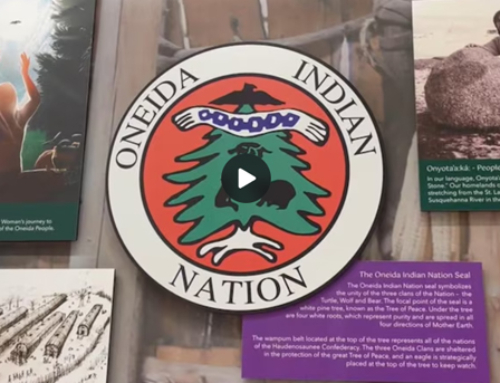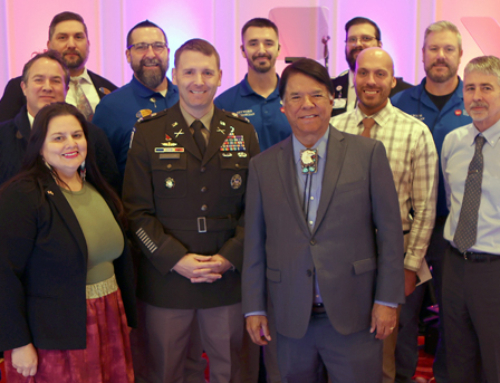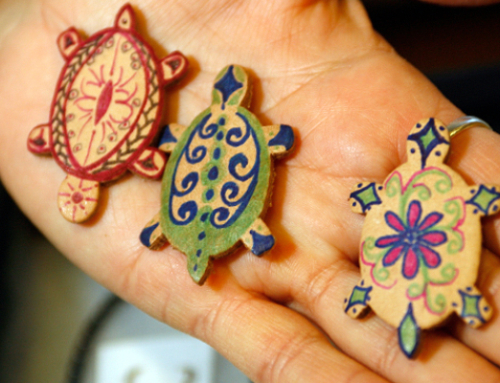Fashion design, once thought to be just a passion project for Nation Member Mary Homer (Wolf Clan), is becoming a source of inspiration, imagination and opportunity. In just a little over a year, Mary has produced designs that have caught the eyes of a growing community, which has led to invitations to more and more fashion shows both locally and nationally.
Mary currently works as a Welcome Desk Attendant at the Oneida Indian Nation’s new Mary C. Winder Community Center. With the opportunity to connect more with the Nation community and the convenience of the short commute from her home in the Nation’s Village of the White Pines, the role has quickly proven to be a great fit.
“It’s just been amazing to be a part of the team led by [Community Center General Manager] Nichola Diaz,” Mary said. “Everyone has really come together and I love being here.”
Mary continues to work on Haudenosaunee beadwork and sews in her time away from the Community Center. Her and her cousin, Holly Orcutt (Wolf Clan), showcase their “Beading Wolves” brand at numerous Native craft shows in the area, including the Oneida Indian Nation’s craft fairs at Turning Stone Resort Casino and Shako:wi Cultural Center. The two work together on special projects of all kinds, including jewelry, purses, bags, apparel, and much more.
Mary has a deep passion for sewing, especially creating ribbon skirts. She enjoys working with velvet and bridal satins despite the challenges these fabrics present.
“It’s a delicate yet tough fabric because it’s heavy,” she admitted. “But it has this amazing shine that makes it worth the effort.”
Largely self-taught, Mary credits her mother, Rose Tompkins (Wolf Clan), for teaching her the basics. Her first sewing project was a meaningful milestone—her own ribbon dress and leggings. It was an ambitious start, but she said it turned out well and remains a treasured keepsake.
When it comes to fabric, Mary is methodical. She typically gets two yards of fabric for each skirt and pairs it with colorful ribbons. Before starting any project, she always tests how the fabric behaves when washed, ensuring it won’t shrink or lose its shape. Efficiency is key to her creative process.
“If I can focus, I can finish a skirt in a single day,” Mary shared. A remarkable feat for such an arduous process.
Mary tries to collaborate with other artists as well. Tereneh Idia Dega is a fashion designer with a specialty in organic and sustainable materials. Tereneh, and other women of the Maasai, worked with Mary and Holly on some pieces years ago, but ultimately, due to the demands of personal life, the collaboration ended.
However, it was a connection made and Mary enjoyed working with her. Networking is a huge part of the fashion industry, so it was surprising, but not shocking, when Tereneh called Mary and Holly about a fashion show in Pittsburgh this past October.
“She didn’t give me much notice, but it was a great opportunity,” said Mary. “She received a grant to bring three women from Kenya to Pittsburgh, and they had been there since June.”
Mary got to reconnect with her and bring some of her own pieces for others to see. She brought several pieces that she designed for Syracuse Fashion Week. Mary aimed to bring awareness to the Missing and Murdered Indigenous Women initiative, which included a men’s vest in a vibrant red color—similar in style to a traditional Haudenosaunee ribbon shirt—with a handprint on the back that has become the primary symbol for the movement.
“For the fall line, we did strength as a theme,” Mary said. “It was a fun time and I was more relaxed than the first show we did.”
Syracuse Fashion Week last April was a leap of faith into the professional fashion world. The experience was nerve-wracking, but with the support of seasoned pros like Jessica Tarbell, who managed hair and makeup for her models, she was able to traverse the challenges.
Mary’s designs are personal and meaningful. Family remains at the heart of her work. One skirt features the handprint of her youngest daughter, Janice, with a second version incorporating vibrant colored prints.
As she gets more exposure, more models have inquired about her designs, wanting to wear them at upcoming shows.
“One of the ladies who came to pick up my pieces to be featured in the Rochester City Hall saw a skirt I’m working on. It’s a black and purple design, but she loved the red version,” Mary said. When she finished it, Mary gifted it to the woman as a thank you for the opportunity to be part of Link Gallery’s “On Native Land” exhibit.
A strong advocate for simplicity and nature-inspired designs, Mary’s creations stand apart from the neon colors and elaborate sequins of other Haudenosaunee artists. Her process is guided by intuition and letting the materials dictate the design, which result in pieces that feel organic and unique.
Looking to the future, Mary is preparing a new line for April called ‘Homer Couture’ that will feature business suits, skirts, and jackets that blend Indigenous inspiration with modern style. She has already cut and prepped the materials – from skirts and velvet neckties to purses – ready to bring her vision to life. She wants these pieces to be versatile, catering to both professional and social settings, while embodying her mission to create art that is both meaningful and wearable.
Mary was recently invited to present Homer Couture at New York City Fashion Week in September 2025 on the Flying Solo platform—an opportunity she is thrilled to be part of. She will be joined by models who will showcase the designs as intended while proudly representing their Haudenosaunee community. Accompanying her is Jessica Tarbell, who will debut her new line alongside Mary.
“We are a team that works well together and gets the job done,” she says.
Despite a packed schedule, which includes more fashion shows, interviews, and community events, Mary remains dedicated to her craft and her community. Her work is not just about fashion – it’s a celebration of identity, creativity, and resilience, showing what can become of one little bead.
